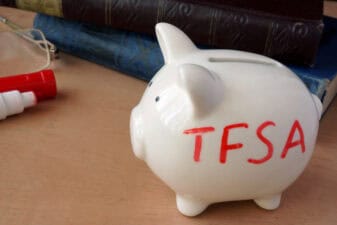Yesterday, Justin Trudeau’s government released its budget for the 2021/2022 fiscal year. The budget pledged $101 billion in recovery spending, including a number of goodies for parents, businesses and the unemployed. For those out of work, the main benefit is an extension of recovery benefits like the CRB. These will be extended for 12 weeks beyond their initial phase-out date. However, starting in July, they will be reduced from their current $500 a week to $300 a week.
What $300 a week means
The reduction of CRB benefits from $500 a week to $300 a week means two things:
First, people who get the benefit for 50 weeks will receive the lower $300 weekly amount for the last eight weeks of their benefit period. Put differently, beyond 42 weeks of benefits, the payout is reduced by $200 weekly.
Second, anybody opening new CRB claims beyond July 17 will receive the lower $300 amount.
For those still out of work due to COVID-19, the reduction in CRB benefits may be disappointing. Ontario is currently in the midst of one of its worst COVID waves yet, with many out of work. Clearly, the pandemic is not over. But the federal government wants Canadians to start thinking about life after COVID, and phasing out benefits like the CRB is one way to do that.
Last year, the federal government ran a deficit of $354 billion (down from $381 billion projected). In 2020/2021, it will run a $154 billion deficit. These are truly massive numbers, and they can’t continue forever. Logically, recovery benefits have to end sometime. Viewed this light, the “phase-out approach”–where benefits are slowly reduced rather than abruptly yanked away–may be a positive for Canadians still depending on them.
Life after COVID-19
If the slow phase out of CRB has any lesson for Canadians, it’s this:
It’s time to start preparing for life after COVID.
Maybe the current vaccine push will end the pandemic, maybe it won’t, but one thing is certain: recovery benefits won’t last forever. The federal government’s resources are not unlimited. Which is why you need to start planning for how you’re going to get by without them.
The logical place to start is to get a job. I know: easier said than done. But once you have stable employment, you can start saving. And once you have savings, you can start investing. That’s when the prospect of building your own “emergency benefits” becomes realistic.
By investing in dividend/interest-paying ETFs, you can build up a passive income stream that pays you in times of financial strife. It’s not hard to get started. If you look at index funds like the iShares S&P/TSX 60 Index Fund (TSX:XIU), for example, they have all the features you need for a rainy day fund. They have built-in diversification, which reduces risk. They pay dividends, which provides passive income. And they offer low fees, so you can rest assured that some mutual fund kingpin isn’t running away with all your money.
In XIU’s case, the diversification is 60 stocks, the dividend yield is about 2.5% ($2,500 annually on a $100,000 position), and the fee is just 0.16% annually. All of these are solid numbers. And of course, the fund is built on the largest best-known Canadian companies, so by buying it, you’re investing in Canada’s economic recovery. It’s a great way to put your savings to work. And over the long run, it beats living on CRB benefits.








